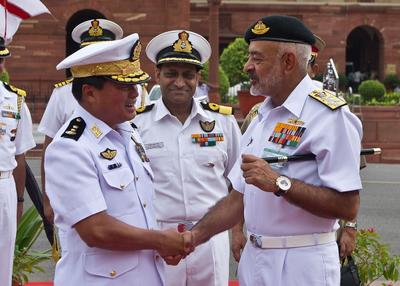it wants to become a key regional power and will achieve this by forging closer ties with countries in Southeast Asia to counter China’s increasing dominance in the region.
To this end, strong advances have been made toward establishing closer ties with Thailand, Myanmar and Vietnam. Indian Prime Minister Manmohan Singh has made high-level visits to Thailand and Myanmar, and India has increased investment in Myanmar and Vietnam. India is also looking at closer defence and security ties with Vietnam, which is not comfortable with China’s assertiveness in the South China Sea dispute.
While all the above gestures are welcome, it is important to bear in mind that India’s land connection into Southeast Asia is through its northeastern region, which New Delhi has long neglected primarily due to the region’s relatively weak representation in parliament. Without a reasonable level of economic development and stability in India’s northeastern states, as well as better infrastructure on its borders, India’s Look East policy cannot become a reality.
There is no doubt that the northeast is receiving more attention — the Ministry of Development of North Eastern Region was set up in 2001 to specifically oversee socio-economic development there. But this alone is not enough. New Delhi has realised that ties with Myanmar — as well as Bangladesh — are largely dependent upon the infrastructure in India’s states in the northeast, including Manipur, Mizoram, Arunachal Pradesh and Tripura.
Yet developments in infrastructure on the border between Indian states and its neighbours are abysmal. Construction for the Imphal–Mandalay bus service, for example, which was proposed during Prime Minister Singh’s visit to Myanmar last year, is yet to begin. Even other projects such as the Kaladan Multi-Modal Transit Transport Project, which seeks to connect Kolkata with Sittwe port in Myanmar by sea, is far from completion and has been delayed due to excessive bureaucratic red tape.
Policy makers in New Delhi need to realise that in order to increase connectivity with Myanmar, Thailand and Cambodia it is important to change its approach toward India’s northeastern states. India needs a stronger policy — one that focuses on greater and comprehensive development of the northeastern states by allowing them to be key stakeholders in all stages of the decision-making process. In doing so, states will feel integrated with the rest of the country and benefit from better relations with its Southeast Asian neighbours.
China is well ahead of India on this front. Many of China’s border provinces now act as smooth conduits linking China with its neighbouring countries. Developments in the Chinese province of Yunnan, which shares a border with Myanmar, are an example of China’s move toward establishing better ties with its neighbours, via its border regions.
India must do the same if it wants to bolster its standing as a regional power. India should take a number of steps to achieve this.
First, the primary focus should be on the region’s economic development. Prioritising a few projects in the northeast is not enough — the central government should also boost the local economy of these states by encouraging industrial growth and creating a strong service sector by promoting tourism in the region. The state and central governments can cooperate to promote tourism and investment, and consider hosting large-scale investor summits and trade fairs with a focus on attracting investors from Southeast Asia.
Second, the government should focus on developing its soft power regionally. For example, there should be greater investment in sports and sports infrastructure, and the Indian government should consider establishing sports tournaments between the northeastern states and Myanmar, and at some stage even other countries in Southeast Asia, including Vietnam and Thailand. This would enhance people-to-people contact and has the potential to increase the influence and spread of India’s soft power.
Third, the central government should consider the views of state governments in the region in both economic and foreign policy issues. This is particularly important in the context of trade with Myanmar and Bangladesh, as well as infrastructure projects where any of the states of the northeast is involved.
A successful Look East policy will only be possible if New Delhi invests not just economically but also politically in India’s north-eastern region.
Tridivesh Singh Maini is associated with the Jindal School of International Affairs, Sonepat, India.

